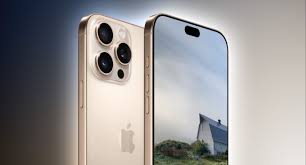In tracking ambitious healthcare objectives, Samsung Electronics Co. is currently exploring the possibility of creating noninvasive methods for monitoring glucose levels and continuously measuring blood pressure. This endeavor places Samsung in competition with Apple Inc. and other notable tech giants.
According to Samsung executive Hon Pak, the company’s efforts to incorporate health-related functionalities into various devices, such as the recently announced Galaxy Ring, are part of a broader initiative. The ultimate goal is to provide consumers with a comprehensive understanding of their well-being by utilizing sensors placed on different areas of the body and throughout their homes.
Health monitoring has already become a significant selling point for smartphones and smartwatches, with Samsung, Apple, and Google’s Alphabet Inc. leveraging these features to attract and retain customers. The expansion of sensors for continuous blood pressure tracking and noninvasive glucose monitoring would represent highly valuable advancements. Apple has dedicated years to developing a glucose reader that eliminates the need for users to prick their skin for blood samples, which would greatly benefit the millions of people living with diabetes.
During a comprehensive interview, Samsung’s mobile digital health chief, Hon Pak, expressed the significance of achieving continuous blood pressure monitoring and noninvasive glucose monitoring, stating that it would signify a significant advancement for the company. He mentioned that this is the objective everyone is striving for, and Samsung is making substantial investments to make it a reality.
Pak refrained from providing specific timelines for introducing these features but expressed hope that noninvasive glucose monitoring could reach the market in some form within the next five years. He emphasized that Samsung is exploring various avenues, including the miniaturization of technology and different platforms, to enable glucose monitoring or similar capabilities.
These statements follow Samsung’s recent announcement regarding developing a health sensor-equipped ring. Pak shared that the Galaxy Ring is expected to be launched before the end of 2024, offering a variety of colors and sizes. Initially, the ring will focus on activity and sleep tracking, with additional health features planned for the future. For individuals who prefer not to wear a watch but still desire to monitor their health metrics and sleep patterns, smart rings like those from Oura provide an alternative solution.
According to Pak, the ring caters to individuals seeking a more comfortable and inconspicuous method of health tracking. It fulfills the needs of a specific population who desire a different approach to monitoring and measurement. While the pricing for the Galaxy Ring is yet to be finalized, Pak mentioned that, like Samsung’s Galaxy Watches, it is unlikely to be compatible with Apple’s iPhone.
Developing a blood sugar monitor presents a more complex challenge, but the potential rewards are significant. Existing products typically involve invasive procedures such as blood draws or skin pricks. Apple has reportedly made substantial progress in developing a noninvasive approach since around 2010. However, the availability of such a product is still years away.
Both Samsung and Apple are actively engaged in enhancing blood pressure monitoring capabilities. Samsung’s smartwatches have previously offered blood pressure determination, but the monitoring is not continuous and necessitates calibration against a separate blood pressure checker.
Pak mentioned that Samsung is thoroughly considering various options to improve its blood pressure features, aiming for longer periods without calibration. Apple, on the other hand, plans to introduce hypertension detection to its smartwatch this year, avoiding the need for calibration but providing approximate readings instead. The watch will alert users to the possibility of elevated blood pressure.
Pak expressed that traditional blood pressure readings lack significant meaning beyond indicating a range of normal and abnormal values. He believes that redefining blood pressure’s purpose is crucial, focusing on assessing cardiovascular risk. Samsung is also exploring the integration of diverse sensors into future earbuds, aiming to measure body temperature and heart rates. Pak noted that the ear provides a closer link to the heart than the wrist, and combining ear, wrist, and environmental data could provide users with a more comprehensive understanding of their health.







